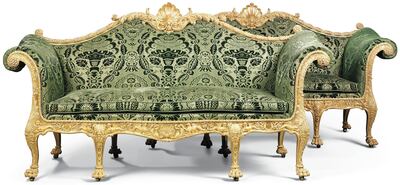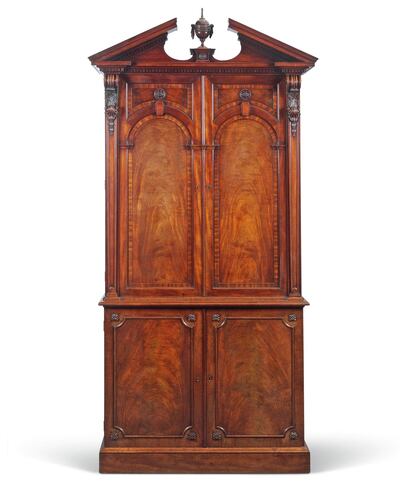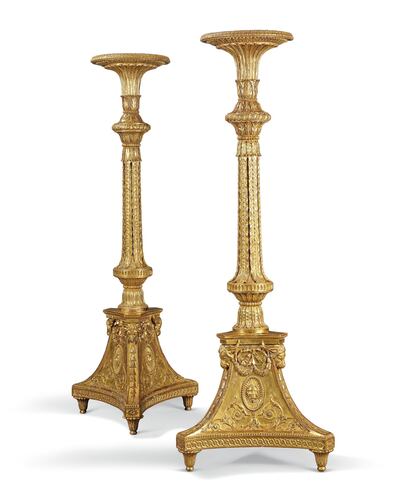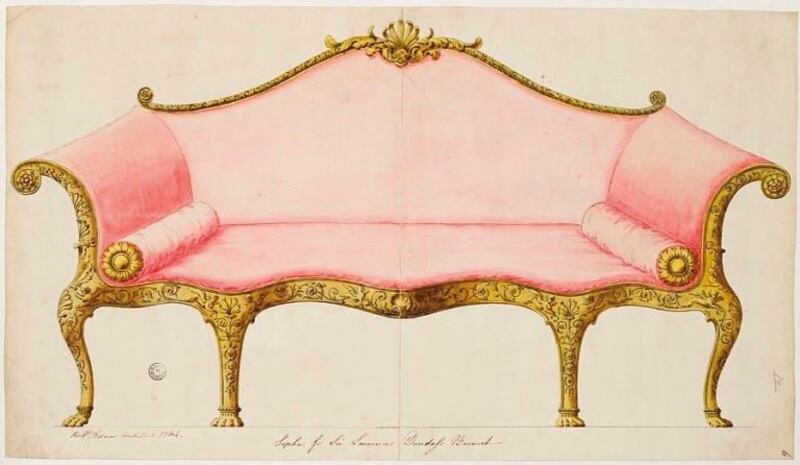"A chair is a very difficult object. A skyscraper is almost easier. That is why Chippendale is famous." So said Ludwig Mies van der Rohe, the Modernist architect par excellence and one-time head of the Bauhaus, who not only was responsible for some of the 20th century's most influential buildings, but who also knew a thing or two about designing iconic chairs.
In referencing Thomas Chippendale, Mies was commenting on more than just the mastery of the 18th-century English cabinetmaker, whose reputation was made through his designing of furniture for most of Georgian Britain’s aristocratic elite. Chippendale was the first designer to have a style of furniture named after him and, even during his lifetime his reputation was such that he became one of those rare characters – like those other famous Georgians (Robert) Adam, (Josiah) Wedgwood and the gunmaker (James) Purdey – for whom a single name continues to suffice.
In doing so, Chippendale achieved a level of what we would now call “brand recognition”, which has lasted for more than 250 years. He is synonymous not only with a particular type of Georgian furniture, but also with exquisite quality, unparalleled craftsmanship and a sense of style that has never gone out of fashion.
The question of Chippendale’s fame and achievement continues to be relevant, not least because 2018 is the tricentenary of the cabinetmaker’s birth, an anniversary that’s being celebrated in exhibitions at several Chippendale-related stately homes across the United Kingdom and in a special auction that is being held at Christie’s in London on July 5.
Provenance is everything
Thomas Chippendale: 300 Years features a small but hugely significant selection of the master craftsman's work. Comprising 22 lots with estimates ranging from £5,000 to £5 million (Dh24,000 to Dh24m), the sale includes a pair of Dundas sofas (circa 1765), part of the only documented suite of furniture made by Chippendale working to a design by the Scottish neoclassical architect Robert Adam; and Rowland Winn's commode (circa 1766), the only documented carved mahogany commode designed by Chippendale in the neo-classical style.
When it comes to attributing a piece of furniture to Chippendale, provenance is everything, especially when examples of the designer’s work can command millions.

In 1765, Chippendale created a suite of furniture for the Robert Adam-designed London residence of Lawrence Dundas, who had amassed a fortune in the Seven Years War. The suite of seat furniture was the most expensive of the cabinetmaker’s career, executed at the enormous cost of £410.4 shillings, excluding the crimson silk damask, with the sofas costing £54 each and each chair £20.
In 2008, when examples of the suite came up for auction at Christie’s in London, it again broke the record for Chippendale seat furniture, with a sofa commanding £2,169,250 and a pair of chairs £2,281,250. The year before, a single parcel-gilt padouk bookcase, created by Chippendale in 1759 for William Crichton-Dalrymple’s Dumfries House in Ayrshire, Scotland, was sold by Christie’s in a private treaty sale for £6m.
_____________________
Read more:
How the eye-catching cholets of Bolivia are lifting perceptions of a city and its people
Inside musician Prince's Caribbean home, complete with a purple driveway
Dubai architect Lulie Fisher to design luxury villas in Zanzibar
_____________________
Quality and rarity may explain the enormous sums commanded by well-documented Chippendale furniture, but they only explain the cabinetmaker’s fame in part. It is very rare for a documented piece of Chippendale to appear on the market. In 1924, only 14 of Chippendale’s clients were known, and by 1968, only another 12 or so had been discovered. By 2013, 68 Chippendale clients had been identified, which in turn enabled the identification of about 700 pieces of documented Chippendale furniture.
The world's first furniture catalogue
For Christie's International's head of furniture and head of sales Robert Copley, however, the secret of Chippendale's success lies not in a piece of furniture, but in the project that made his reputation – a pattern book published in 1754 as The Gentleman and Cabinet-Maker's Director. "Not only did it provide other craftsmen working in the furniture trade with models they could copy, but it established a sense of style, centred on Chippendale's own works," Copley says. "And it became a source of inspiration that established Chippendale's reputation as the finest furniture-maker in the country."
The world's first furniture catalogue, in which Chippendale coined the phrase "household furniture", the first edition of the Director collected 160 designs executed in the three most fashionable styles of the day: Gothic, Chinese and Modern, or what we would now know as Rococo.

The Director won the cabinetmaker commissions, but it also meant that people across Britain, and indeed, throughout Europe and North America, began to commission furniture from local cabinetmakers, all of whom aspired to Chippendale's sense of style and taste. Famous fans included Thomas Jefferson in America, Empress Catherine the Great in Russia, and even King Louis XVI of France, each of whom owned a copy of the book.
A stylistic arbiter
Up until that point, people working in the furniture industry were viewed very much as tradesmen and craftspeople, but here was Chippendale, not only appealing directly to the upper echelons of British society, but also acting as a stylistic arbiter, an achievement that points to the broader factors that have always underpinned his unparalleled appeal.

Chippendale had risen from humble origins, as the son of a carpenter in the rural West Riding of Yorkshire, to become one of the most successful entrepreneurs and self-promoters of his time, something that was possible because of the broader social and political environment he operated in.
The Georgian period saw Britain establish itself as an international power at the centre of an expanding mercantile and colonial empire. This enriched Britain immeasurably, providing markets for manufactured goods, and new and often luxurious raw materials (such as Chippendale’s much-loved mahogany) while creating a new consumer class, his clients, with unprecedented amounts of money to spend on their surroundings.
Chippendale succeeded because he understood the mechanics of this newly globalised and expanded consumer society, a society so very similar to our own. We are as obsessed with style, perfection, luxury and conspicuous consumption as the Georgians were and, just like them, we also desire those elusive qualities that, even after 250 years, Chippendale furniture continues to bestow: distinction and the very hallmark of taste.
A full presale exhibition of Thomas Chippendale: 300 Years opens at Christie’s, St James’ London, from tomorrow until July 5. For more details visit www.christies.com





